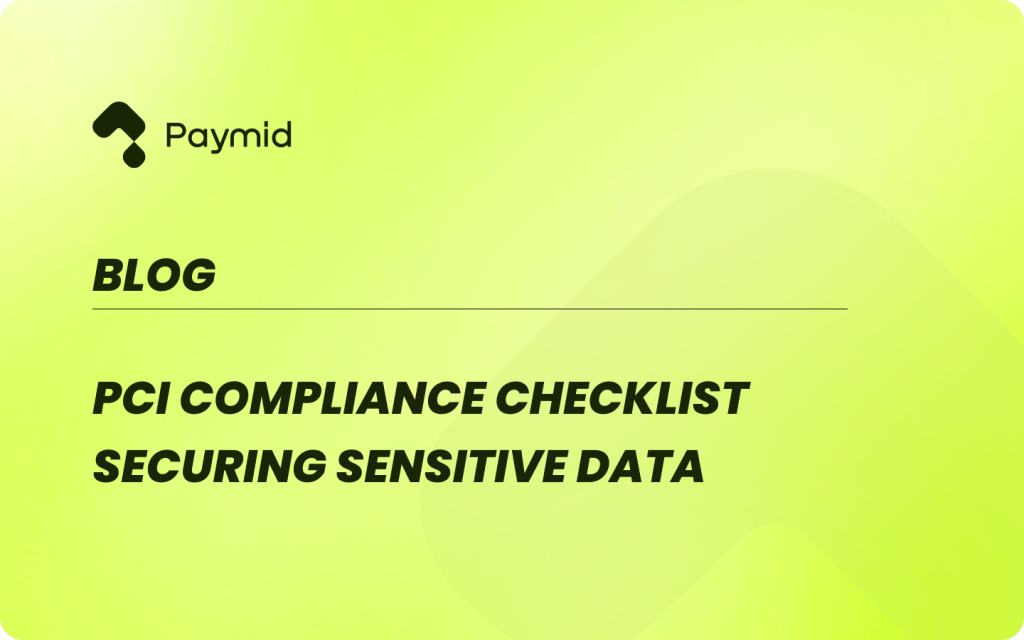PCI Compliance Checklist – Safeguarding Sensitive Information

Staying ahead of cybersecurity threats is more crucial than ever for businesses handling payment card data. A comprehensive PCI compliance checklist is your roadmap to safeguarding sensitive information, building customer trust, and avoiding costly penalties. Implementing robust security measures, from encryption to risk assessment, is essential in today’s digital landscape.
⚡ Key Takeaways
Understanding PCI DSS Compliance
The Payment Card Industry Data Security Standard (PCI DSS) is an internationally recognized set of requirements designed to secure credit card information handling[1]. Launched in 2006 by the PCI Security Standards Council (PCI SSC), this framework helps businesses safely accept, process, store, and transmit payment card data [2].
The PCI SSC, formed by major credit card companies like Visa, MasterCard, American Express, Discover, and JCB, maintains and updates these standards through ongoing collaboration with industry stakeholders[3].
Importance of PCI Compliance
PCI compliance offers significant benefits to businesses, credit card companies, and customers alike.
By implementing these security best practices, companies can:
- Strengthen their cybersecurity stance.
- Reduce the risk of data breaches.
- Protect sensitive customer information.
- Increase customer trust.
- Avoid fines for unintentional data exposure.
During the first half of 2020, data breaches exposed 36 billion records, with financial motivation behind most incidents. PCI compliance helps mitigate this risk by providing a continual safeguard for cardholder data, ensuring consumers don’t suffer financial losses[4].
Moreover, PCI compliance contributes to the overall safety of the global payment card data security ecosystem. It’s an ongoing process that aids in preventing future security breaches and helps businesses maintain compliance with other industry regulations like GDPR and ISO [5].
The PCI DSS Requirements
The Payment Card Industry Data Security Standard (PCI DSS) outlines 12 crucial requirements that organizations must meet to ensure the security of cardholder data. These requirements are grouped into six control objectives, each addressing specific aspects of data protection [6].
Network Security Requirements
- Install and maintain network security controls: Organizations must establish and maintain firewalls and router configurations to protect cardholder data. This includes creating standardized processes for access rules and reviewing configuration rules bi-annually.
- Apply secure configurations to all system components: Default passwords and other vendor-supplied security parameters must be changed. Organizations should maintain an inventory of all systems and follow hardening procedures for new systems.
Data Protection Requirements
- Protect stored account data: Cardholder data must be encrypted, truncated, tokenized, or hashed using industry-accepted algorithms. A strong encryption key management process is essential.
- Protect cardholder data with strong cryptography during transmission over open, public networks: Secure transmission protocols like TLS or SSH must be used to encrypt cardholder data when transmitted across public networks[7].
Vulnerability Management Requirements
- Protect all systems and networks from malicious software: Anti-virus solutions must be deployed on all systems, including workstations, laptops, and mobile devices. These programs should be regularly updated and maintained.
- Develop and maintain secure systems and software: Organizations must implement a process to identify and classify security vulnerabilities, deploy critical patches promptly, and include security requirements in all phases of development.
Access Control Requirements
- Restrict access to system components and cardholder data by business need-to-know: Role-based access control (RBAC) should be implemented, granting access to cardholder data and systems on a need-to-know basis.
- Identify users and authenticate access to system components: Each authorized user must have a unique identifier, and passwords must be adequately complex. Two-factor authentication is required for non-console administrative access [8].
- Restrict physical access to cardholder data: Physical access controls, such as video cameras and electronic access control, must be implemented to monitor entry and exit from locations with cardholder data [9].
Monitoring and Testing Requirements
- Log and monitor all access to system components and cardholder data: All systems must have correct audit policies set and send logs to a centralized syslog server. Logs must be reviewed daily for anomalies and suspicious activities [10].
- Test security of systems and networks regularly: Regular testing includes quarterly wireless analyzer scans, vulnerability scans, and annual penetration tests for all external IPs and domains.
Information Security Policy Requirements
- Support information security with organizational policies and programs: Organizations must maintain an information security policy that is reviewed annually and disseminated to all employees and relevant parties. This requirement also includes conducting annual risk assessments, user awareness training, and implementing incident management procedures.
Implementing PCI DSS Controls
Implementing PCI DSS controls is a crucial step in safeguarding cardholder data and maintaining compliance. Organizations must follow a structured approach to ensure all requirements are met effectively.
1. Gap Assessment
A PCI DSS gap assessment examines an organization’s cardholder data environment (CDE) to determine compliance with the standard. This process involves:
- Reviewing current security posture against PCI DSS requirements.
- Identifying areas of non-compliance.
- Prioritizing remediation efforts based on severity and risk.
A Qualified Security Assessor (QSA) typically performs this assessment, which includes:
- Evaluating existing security controls, processes, and technologies.
- Reviewing policies and procedures.
- Conducting interviews with key stakeholders.
- Inspecting systems and networks.[11]
2. Remediation Steps
After identifying gaps, organizations must take steps to address them:
- Prioritize identified gaps based on their impact on security and compliance.
- Set clear objectives for each gap.
- Allocate necessary resources (personnel, technology, budget).
- Create actionable steps for each objective.
- Set realistic timelines for completion.
- Assign responsibilities to specific team members or departments.
- Implement required security measures, such as:
- Updating firewall rules.
- Patching software.
- Removing unnecessary account data storage.
- Implementing secure business processes.[12]
3. Documentation and Policies
Proper documentation is essential for PCI DSS compliance:
- Develop and maintain security policies aligned with PCI DSS requirements.
- Create configuration standards for all system components.
- Establish a wireless network security policy.
- Document procedures for managing vendor default settings.
- Maintain detailed records of remediation efforts and ongoing compliance activities.[13]
4. Employee Training
Employee awareness is crucial for maintaining PCI DSS compliance:
- Provide comprehensive PCI DSS awareness training to all personnel.
- Educate employees on:
- Importance of data security.
- Common security threats (e.g., phishing, social engineering).
- Proper handling of sensitive data.
- Incident response procedures.
- Conduct regular training sessions to keep employees updated on security best practices.
- Require personnel to acknowledge understanding of policies and procedures annually.[14]
By following these steps, organizations can effectively implement PCI DSS controls and maintain a secure environment for payment card transactions.
Read More:
- Merchant Initiated Transactions (MITs): Steps, Types & Compliance
- Top Tips for Managing Venmo Recurring Payments Efficiently
- Network Tokenization: Benefits, Process & Implementation
- Smart Routing Payment: Components, Benefits & Process
- Cascading Payments Explained: Benefits and Techniques
Do You Need PCI Compliance?
Ensuring PCI compliance is a crucial step for businesses handling payment card data. In today’s digital landscape, the importance of PCI compliance cannot be overstated. Hence, the PCI Compliance checklist is an important resource. It significantly impacts an organization’s cybersecurity posture and ability to safeguard against evolving threats[15].
By implementing the measures discussed in this guide, businesses can create a secure environment for payment card transactions, helping to protect both their customers and their reputation in an increasingly complex digital marketplace.

